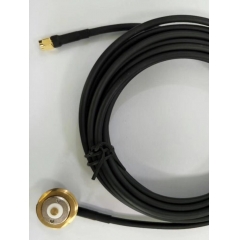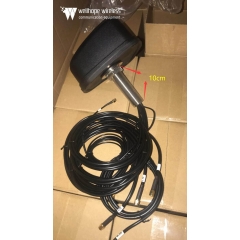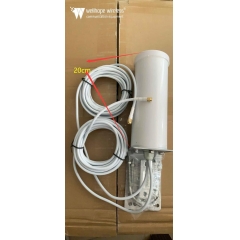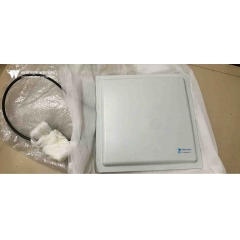Mitä tulee dB, dBm ja dBi
Arvioitu 15 minuuttia lukemisen loppuun
D B (desibeliä)
DB on suhteellinen yksikkö, jota käytetään edustamaan kahden suuren välistä suhdetta. Sitä käytetään yleensä kuvaamaan tehon tai jännitteen (tai virran) suhdetta.
Määritelmä: (dB=10 \ log_ {10} \ left (\ frac {P_2} {P_1} \ right)) tai (dB=20 \ log_ {10} \ left (\ frac {V_2} {V_1} \ right) )
Niistä (P_1) ja (P_2) ovat kaksi tehoarvoa ja (V_1) ja (V_2) kaksi jännite- tai virta-arvoa.
Huomautus: dB on suhteellinen yksikkö, joka edustaa kahden suuren välistä suhdetta, ei absoluuttista arvoa.
1. Desibelin laskentakaava tehosuhteelle:
Kun verrataan kahta tehoarvoa, desibelin laskentakaava on:
DB=10log10 (P1P2), jossa (P_1) on vertailuteho (yleensä kiinteä arvo) ja (P_2) on mitattava teho. Jos (P_1) on 1 watti, yllä oleva kaava voidaan yksinkertaistaa seuraavasti: dB=10log10 (P2), missä (P_2) on tehoarvo watteina.
2. Desibelin laskentakaava jännitteen (tai virran) suhteelle:
Kun verrataan kahta jännitteen (tai virran) arvoa, desibelin laskentakaava on:
dB=20log10(V1V2)
kenties
dB=20log10(I1I2)
Niistä (V_1) ja (I_1) ovat referenssijännitteitä ja -virtoja (yleensä kiinteitä arvoja), kun taas (V_2) ja (I_2) ovat mitattavia jännitteitä ja virtoja. Jos (V_1) tai (I_1) on 1 voltti tai 1 ampeeri, yllä oleva kaava voidaan yksinkertaistaa seuraavasti:
dB=20log10(V2)
kenties
dB=20log10(I2)
Here (V_2) and (I_2) are voltage and current values in volts or amperes.
Note: In these formulas, (\ log_ {10}) represents the logarithm based on 10. If (P_2/P_1) or (V_2/V_1) (or (I_2/I_1)) is greater than 1, then the decibel value is positive; If it is less than 1, the decibel value is negative. The larger the decibel value, the greater the multiple of (P_2) relative to (P_1) (or (V_2) relative to (V_1), or (I_2) relative to (I_1)).
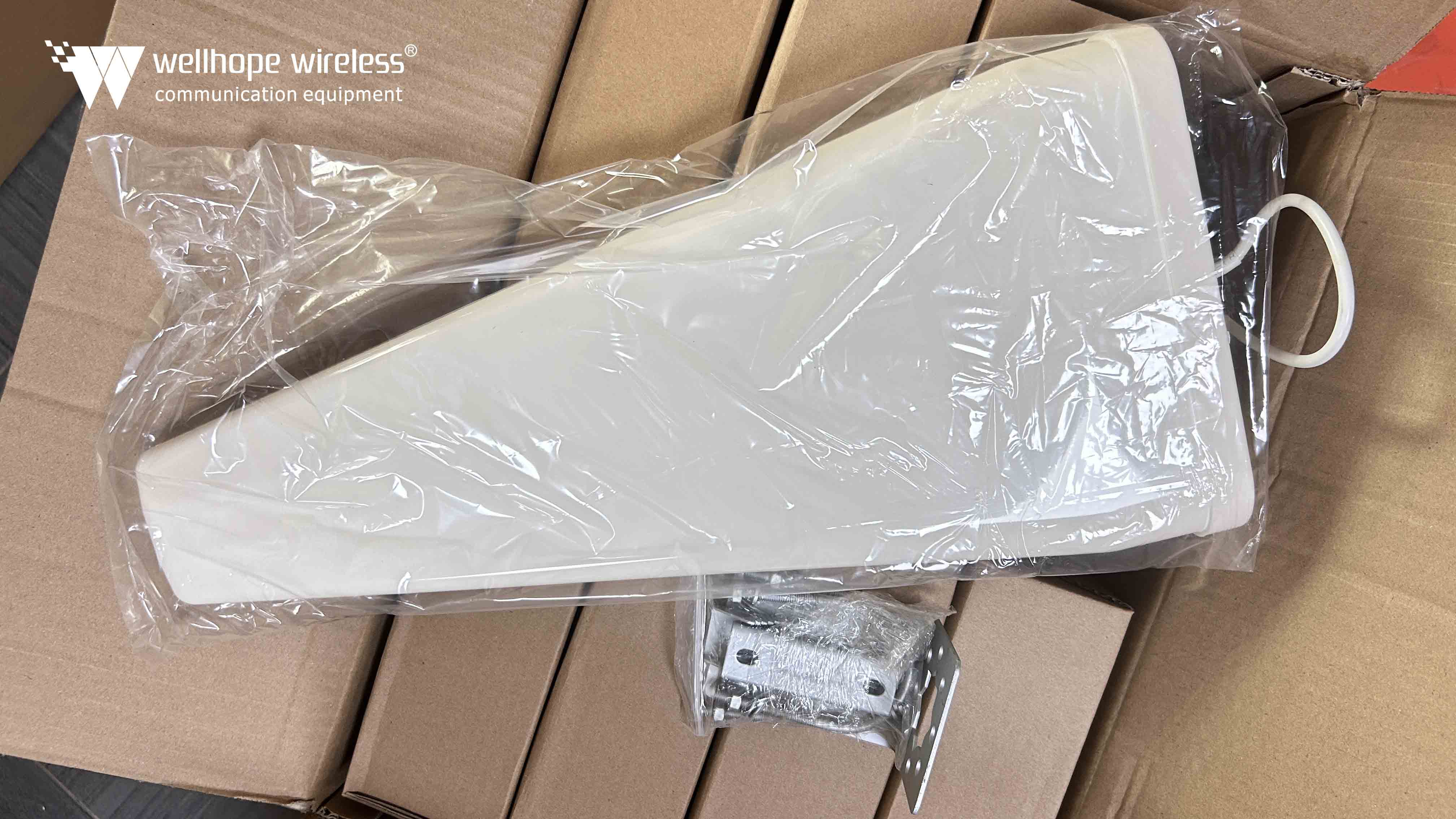
DBm (decibels milliwatts)
DBm is an absolute unit used to represent power values, with a reference point of 1 milliwatt (0.001 watt).
Definition: (dBm=10 \ log_ {10} \ left (\ frac {P} {1mW} \ right))
Where (P) is the power value to be measured.
For example, if the power of a signal is 1 watt, then its power is (10 \ log_ {10} (1000)=30 dBm).
DBm is commonly used to describe the power of wireless signals or the sensitivity of receivers.
DBm calculation formula
dBm=10log10(1mWP)
Among them,
(P) is the power value to be measured, in milliwatts (mW).
(1mW) is the reference power value, which corresponds to the power of 0dBm.
Related information
1. Unit conversion:
0dBm corresponds to 1 milliwatt (1mW).
For every 3dBm increase, the power doubles; For every reduction of 3dBm, the power is halved.
For example, 30dBm corresponds to 1 watt (1W), because (10 \ log_ {10} (1000)=30) (because 1W=1000mW).
2. Common conversion values:
o 30dBm = 1W
o 40dBm = 10W
o 50dBm = 100W
3. Precautions:
DBm represents the absolute value of power, not the power ratio.
In the calculation, pay attention to the unit of power and ensure that it is consistent with the unit of reference power (1mW).
Example
If the power of a signal is 4 watts (4W), then its power (in dBm) can be calculated as follows:
dBm=10log10(1mW4000mW)=10log10(4000)=10*(3+log10(4))≈36.02dBm
(Here (\ log_ {10} (4) \ approx 0.602) is the base 10 logarithm of 4)
DBi (decibels relative to isotropy)
DBi is a unit used to describe antenna gain, with its reference point being an idealized isotropic antenna (i.e. an antenna that uniformly radiates or receives in all directions).
Definition: (dBi=10 \ log_ {10} \ left (\ frac {G} {G_ {iso}} \ right))
Among them, (G) is the gain of the antenna to be measured, and (G_ {iso}) is the gain of an isotropic antenna (theoretically 1).
Note that since isotropic antennas do not exist in reality, dBi is a relative unit, but it provides a convenient reference point to compare the gains of different antennas.
DBi is commonly used to describe the gain of antennas used in wireless communication.
DBi calculation formula
dBi=10log10(E0E)
Among them:
(E) is the effective radiation power or gain of the actual antenna.
(E0) is the effective radiation power or gain of an ideal isotropic antenna. An ideal omnidirectional antenna has uniform radiation in all directions, and there is no such antenna in practice, so it serves as a reference benchmark.
Related information
1. Vertailuvertailu: dBi:n vertailuvertailu on monisuuntainen antenni, joka on teoriassa ihanteellinen malli, jota käytetään vertaamaan muiden antennien vahvistusta.
2. Suhde dBd:hen: dBi ja dBd ovat molemmat yksiköitä, jotka kuvaavat antennin vahvistusta, mutta niiden vertailustandardit ovat erilaiset. Vertailuarvo dBi:lle on monisuuntainen antenni, kun taas dBd:n vertailuarvo on dipoliantenni
(dipoliantenni). Yleisesti uskotaan, että kun edustaa samaa vahvistusta, dBi:n edustama arvo on 2,15 suurempi kuin dBd:n arvo (eli dBi=dBd+2,15).
3. Esimerkki: Jos antennin vahvistus esitetään 16 dBd:nä, sen vahvistus esitetään 18,15 dBi:nä dBi:nä (yleensä desimaalit huomioimatta, se on 18 dBi).
Yhteenvetona voidaan todeta, että dBi on yksikkö, jota käytetään kuvaamaan antennin vahvistusta, ja sen laskentakaava perustuu todellisen antennin efektiivisen säteilytehon suhteeseen ideaalisen monisuuntaisen antennin efektiiviseen säteilytehoon . Verrattuna dBd:hen dBi:n referenssi on ympärisuuntainen antenni, joten samaa vahvistusta edustaessa dBi:n arvo on 2,15 suurempi kuin dBd:n arvo.


















 MIMO antenni
MIMO antenni

